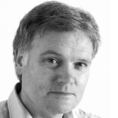MIND MOVES:Gripped by a fear that doesn't make sense
WHEN SHE phoned, there was fear in her voice. The big questions about life had been haunting her for days. “Who am I?” “Who can I trust?” “Is anything real?” “Am I just imagining everything?”
She was convinced she was finally losing it. Her mind had been “ambushed” by these obsessions and she feared they were going to drag her all the way down.
As I listened to my friend, I thought of the many of us who become gripped by fear that doesn’t make sense. Fear catches us unawares. We may be going about our business, when out of the blue, it creeps up on us. The slightest stress can set us off. Thoughts and worries that make little or no sense begin to dominate our minds; our most basic insecurities become exaggerated and the world around us feels suddenly unsafe.
What I am trying to describe is an experience of fear that is virtually impossible to put into words. One writer, Wilfred Bion, described it as “nameless dread”. Something that arises from deep within our minds where we carry “fractured sensations” of early childhood experiences. These sensations are the body’s memory of a time when we had no language to name what frightened us and when we had only very primitive ways to cope.
When these sensations surface in our adult minds, we often revert to the very same coping mechanisms we relied upon as children. We move away from them into confusion, we distract ourselves as best we can. Or we may project the sensation of fear onto something outside of us so that we can make sense of why we are afraid. We may locate our fear in a person, an animal, a place or in a series of abstract questions for which we have no satisfactory answers.
What we have learned from the psychology of fear points us in a different direction. It encourages us to move towards our fears, to face them rather than to run away from them or to project them outside ourselves.
As my friend spoke, I gently nudged the conversation away from the “big questions” that perplexed her. I asked her to describe what her fear felt like. She talked about what it was like for her to feel afraid. As she did, her feeling shifted into a different space. She became sad and began to cry.
When we move towards fear instead of running away from it, something changes inside us. Our feeling of dread opens into a feeling of sadness. We may feel suddenly alone, even though we are surrounded by others; we see clearly, as if for the very first time, that we have been running from fear all our lives and we finally admit to ourselves how exhausting this has been.
As we continued to push gently at the edge of her fear, my friend touched on what was probably at the heart of it. She was recovering from a severe health trauma that was in remission, but could recur at any time. I asked her what it was like to find herself in such a place in her life and she described her terror of dying. Pushing her still further to elaborate on what it was about death that frightened her, she described how it saddened her to think of losing contact with those she loved dearly. This realisation was deeply upsetting and very understandable. But as she stayed with it, her mind began to come to terms with this fear and without any prompting, she shifted into yet another space.
It was true that she could die from a recurrence of her illness, but it was also possible that she could live for a long time. In the matter of her death, or of anyone’s death, we are not in control. My friend realised that the challenge for her, and indeed for all of us, was how she chose to live with this uncertainty.
And standing at the very edges of her fear, she gradually connected with what was real. She was still alive and she knew that this was what mattered more than anything else to her. She was fortunate to have the love of her family and she saw this for the enormous gift that it was. Working through her fear, she arrived at a place where she found solid ground to stand on.
Tony Bates is founding director of Headstrong – The National Centre for Youth Mental Health (headstrong.ie)
